Comic Book Artist: Were you much of a comics reader as a kid?Michael Wm. Kaluta: I wasn’t a student of comics when I was young, I was a plain old reader. Junior high school was the time when I stopped reading any kind of comic books avidly and high school was when I started reading Edgar Rice Burroughs avidly, looking at the illustrations. In the year I took off between high school and college, I met Steve Hickman, a big Burroughs fan. Then, through Hickman I met Steve Harper, who had the information about all of the old ERB illustrators. It was a real shot in the arm to see all this imagery that obviously had inspired Roy Krenkel and Frank Frazetta. We all loved ERB and the illustrations; we loved those worlds almost to the point of wanting to go and leave this life behind. Most of the time the two Steves and I were together, we were drawing and drawing and drawing.
CBA: I was fortunate enough to see, hanging on Carmine Infantino’s apartment wall, an original by St. John and across the room is your illustration for the masthead for the Korak, Son of Tarzan letters page.MWK: That’s not my masthead drawing. The one that Carmine has was actually by Roy Krenkel and inked by Jeff Jones. It’s inked on vellum because Roy had done his in ballpoint — and it’s pure Roy. It looks like my style because Roy so influenced me. The reason that I know that it’s not Roy’s original is because I have Roy’s ballpoint original in my Studio. It’s flattering to hear I did that art but it’s not too surprising. I studied Roy — who said, “Don’t study from my work because you’ll just learn my mistakes!” I told him that his mistakes are gold. If I’d have done that beautiful Korak figure, leaning to the side shooting the arrow straight up, I’d have just retired.
Hickman, Harper and I got to New York in 1967 to attend the SCARP Con, where we met up with the guys from the EC fanzine Spa-Fon: Rich Hauser and Helmut Mueller. We hung out at Phil Sueling’s table and he was, of course, always willing to introduce us to all the good artists. This young Catholic kid from Baltimore, Bernie Wrightson, was at the convention and he won an award for best young talent. We all met, hit it off and went everywhere together. The guys from Chicago said, “Frank’s upstairs and he wants to meet you,” so we ran up the nine flights. We were too impatient to wait for the elevator! We all had portfolios under our arms and we went to Frank’s room. Ellie was there and so were their kids. Frank was on his hands and knees trying to plug a TV set in for his kids to watch cartoons. Then he looked through our portfolios, one by one, as we were standing there, awestruck to be in the presence of the Master. I don’t remember what he said to me, if anything, because Bernie had presented him with a drawing and Frank said, “Look, here’s a bunch of Johnny Comet originals — go pick one.” They were Sunday pages! It was flawless work! Later, the Chicago Boys, with Bob Barrett and Frank, brought Frazetta’s originals to the hotel. We had this big artfest up in the room and everybody there went absolutely bugfuck looking at this stuff. It was also very sobering because after staring holes through the paperback covers the originals were so much more painterly with so much incredible depth — I was not the only guy to think “...might as well just give up... this guy is too good!”.
CBA: What were your aspirations as a young artist?MWK:I never even thought about being an illustrator or comic book artist. I’d just finished my second year of college...I didn’t know what I was going to do, stay in school or join the army. After the next SCARP convention, Phil Seuling contacted me and said that Al Williamson had seen stuff that I did and was interested in talking to me about maybe helping with a story. That flipped me out. At the next New York Convention I went up to Al and he gave me a script that he was having trouble getting in to. He asked me to stretch it out. “Give me plenty of boots, girls, dinosaurs and stuff” he said. I made 7 pages into 12. Al still has my fumbling pencil originals and unless he gets mad at me we won’t tell anyone. They’re really awful, awful stuff. I was so uptight about doing the job that I just rendered and detailed it to death. Later Al did a fine job with the story and let me doodle a bit on a page or two. DC Comics published it under the title The Beautiful Beast.
CBA: Did you meet Jeff Jones at around this time? MWK: 1967... Jeff had been the winner of best young talent at the previous SCARP convention and so we got to meet him there and see some of his originals. Fairly amazing. We (Steve Hickman, Steve Harper, Bernie and I) went to his apartment uptown in New York — in the same building Bernie and I would eventually live.
CBA: Was this the place where First Fridays was held? MWK: The First Friday Get Togethers I remember best took place in Jeff and Weezie’s new apartment on the sixth floor. It had a very large living room. Anywhere from five or six to 25-30 people would show up. It was a very eclectic crowd; one one hand, you had Bill Stillwell who was studying to become a surgeon and on the other, Larry Hama, fresh back from Vietnam with sunglasses and camouflage clothing (a frightening-looking man; a sweetheart who looked like a warrior — which was what he was!). Then there would be little Rick Bryant…
CBA: Did Woody come over at all? (Wally Wood) MWK: Not that I recall.
CBA: So there was a Marvel crowd who would hang out at their own place, and your own crowd at First Fridays?MWK: The First Friday Get Togethers were open to all, but the crowd tended to be folks who wanted to go on and do anything that had to do with comics or painting. None of us had become “company men” yet. Roy Krenkel was usually the center of attention when he was around because he was so funny and so unusual. He was always the teacher. We’d all sit around talking about our stuff and where we wanted to go. Roy would show us old-time illustrators from his vast collection. Everybody drank in the art and inspiration.
CBA: How did you become involved with DC Comics? MWK: When I first came to New York, in January 1969, I went right out the 60 miles to Al Williamson’s place and stayed there, working on the story I’d pencilled, helping out with Al’s daily strip (Secret Agent Corrigan) and looking at his phenomenal original art collection — more Hal Foster originals than I ever dreamed of seeing.
After two weeks, I got a call from Berni who said I had received a package from Charlton Comics with a script enclosed. Al said, “Hey, that’s real work! Off you go.” Al had talked to Dick Giordano, who at the time was an editor at Charlton, to see if he could give me a job.
Before anything could come of that, Dick went over to DC Comics. Charlton Comics still had my samples... I guess they liked them... out of the blue Charlton sent me a 3 page script, full of adventure, and those hard to draw subjects: people and horses. I drew it for $20 a page, sweating every line and turned the pencils in. Then they told me the pencils were lost but offered me another script. This one was a western. Al had given me all this great horse reference from The Cisco Kid newspaper daily proofs.
THAT helped me immensely. After the Western, Charlton gave me a romance story which I tried my best on but I turned in a real goofy job. So the editors finally realized that I wasn’t a western or romance artist and they found the adventure strip pencil pages that they’d misplaced. So I inked that, sent it in and got my other ten dollars.
[ Kaluta's first published work was a backup in
FLASH GORDON 18, Jan 1970 "Great Battles of History:Shiraz" (4 pages). About early muslims battling on horses.
The western story is " The Amazons of Reed’s Crossing" in BILLY THE KID 85, July 1971 (4 pages), also reprinted in issue 145.
The romance story is TEEN CONFESSIONS 59, Dec 1969 "Off the Beach" (5 pages) ]
About that time Al said that I ought to go over and see Dick [Giordano] at DC Comics. I had been going over there with Bernie who was drawing the Nightmaster stories at the time [in
SHOWCASE 83 and 84, June and Aug 1969. Partially drawn, uncredited, by Kaluta and Jeff Jones ].
One time, Bernie and I were sitting in the little lobby and Dick [Giordano] came out to escort him in. I said, “If you have a little one or two-page script lying around…”
Berni comes out later with a big Cheshire grin on his face and says, “Here you go,” handing me a two-page script.
I must have spent four or five weeks just going around and around with these two pages! I did it, took the pencils in and Dick started to teach me the rudiments of storytelling. I had just been doing drawings. He taught me with overlays but said, “Don’t change this — just ink this up. We’ll give you another one.”
Dick eventually gave me three two-page strips, one Bernie helped with a lot with the figure-work (I had been helping Bernie with the Nightmaster stories, helping to draw the panoramas that Bernie was uncomfortable drawing... it was a trade-off).
[
HOUSE OF MYSTERY 195, Oct 1971( 2 pages),
WITCHING HOUR 7, March 1970 (2 pages), and the cover and 2 intro pages for
SECRETS OF SINISTER HOUSE 6, Sept 1972, cover also on issue
7, and an intro splash page in issue
11 ]
The wonderful thing was, that after those three stories, Dick gave me a five-pager (The Coming of Ghaglan) [
HOUSE OF SECRETS 87, Aug 1970, (6 pages) ] that I went absolutely crazy on and had the greatest time doing. I used Zip-A-Tone (without even asking, as far as I can remember), did all these neat effect things and brought it in. Everybody loved the story saying it was so unusual and graphic (even though the drawing was somewhat crude). It looked like I’d get more work soon. But Dick went freelance again and he was the only editor I knew there! I should have talked to the other editors but I just didn’t even think to schmooze around. So then I had my hiatus from DC for maybe a year or so.
CBA: On average, how long did it take for you to do a page? MWK: Three days. For me, my overhead was so low that any kind of money was pure gold. I have no idea how I made it through some of those months of slow work.
CBA: Did you aspire to a regular gig or just go along project by project? MWK: I didn’t even think about doing regular comic book work. One thing that frightened me about comics was that I never knew how to draw the same face twice — but I later learned that people give you a lot of leeway (especially kids) and the faces don’t have to look the same.
CBA: How did you get back to work at DC Comics? MWK: I can’t recall. Somehow I ended up back there, probably by just hanging out in the coffee room. Every once in awhile we’d hang out in Neal Adams’ special room watching him draw — he had this big projector that would blow-up his little sketches onto the drawing paper.
I always had my portfolio along and at one point, Julie Schwartz came to the door and announced that he needed a good science fiction artist to do a five-page story. He asked, “Who do you know? Who’s good?” And I poked my head around the door and said, “I’m pretty good and I have some stuff.” He bellowed to me, “Who’re you?” And I said, “Mike Kaluta.” “Kaluta? I’ve heard that name before.” The reason he heard that name is due to Neal using it as a sound effect in the “Peril in Plastic” story from Green Arrow/Green Lantern — everybody in the office had been chanting, “Ka-looo-ta! Ka-looo-ta!” for weeks. [
GREEN LANTERN 84, July 1971 ]
Julie looked through my stuff, said it was okay, and he gave me the Amazing World of Krypton story.
[
SUPERMAN 240, July 1971, "The Man Who Cheated Time" (7 pages) ] Besides a pile of covers later on, I worked with Julie on just that one job. We were friends ever since but, boy, he made me erase so much stuff. I kept putting in more than he thought the story needed. His old time Superman approach was very much aimed at younger readers — nothing and everything was left to the imagination.
One day a bunch of professionals had met at the office to go on a field trip to Sparta, the comic book printers and see how things were done. I felt a misanthropic wave and didn’t want to be there so I went up to the empty office and was doodling. Carmine Infantino, then President of DC Comics, came by and said, “Mikey, ever thought about doing covers? I think you’d do good covers. Tell you what: drop off a few Batman ideas and I’ll see what we can do.” So I started drawing them up and took them in. Carmine picked one and that became my first of a successful run Detective Comics covers.
I was flattered beyond belief.
[ covers on
DETECTIVE COMICS 423, 424, 426, 427, 428, 431, 434, 438 and a decade later, 572 ,
and
BATMAN 242, 248, 253, and a pin-up in 1986 in BATMAN 400 ]
CBA: Would Carmine do the breakdowns to the covers?MWK: Rarely ones that I followed. He would do one but I would do my own thing and he would say, “That’s great, Mikey, do that.” Once, he said, “No, do it like I drew it,” and the finish looked just like an Infantino layout — a ghost coming through a wall with upper body, one knee and one hand coming through the bricks. I caught hell from my editor but Carmine had wanted it that way.
Carmine was very, very good to me. I wasn’t a Neal Adams or Bernie Wrightson. My stuff was much cruder. Enthusiasm, mood and possibly concept might have carried my stuff but I had no real technique. Somehow they dug my potential and I’m very grateful to all the people up at DC. Carmine was always there and he always had a good word to say. Neal would always help me out and walk me through stuff — sometimes to my detriment. There was one mystery story I did about a boxer who gets bitten by an ant. Neal helped me with the layouts — there’s all these little Neal Adams’ cliches in the story that don’t really work with my novice style. However, there’s some really nice drawings of city scenes in that story... images that would eventually blossom in the Shadow material.
[
HOUSE OF SECRETS 98, July 1972, "The Born Loser"( 9 pages) ]
At one point while I was doing the House of Mystery and House of Secrets covers, Joe Orlando came into the room where I was sketching and said, “Listen, DC is getting the license to the Edgar Rice Burroughs characters. Is there anything that you’d like to do?” I said, “John Carter of Mars!”
But Joe said, “No, no. Murphy Anderson has wanted to do that since he was a kid. What else? Tarzan?”
I knew I wasn’t going to get any of the big ones so I said, “How about Carson of Venus?” He said, “I don’t know if I remember that one.” He got Len Wein to do the scripting and I did the drawing. It was a good team. Eventually Len left for other things and it came down to me to adapt and draw it myself.
[
KORAK 46-56, 1972-1974, and one last episode in
TARZAN 230, May 1974.
Also one issue of "Pellucidar" in
WEIRD WORLDS 4, March 1973 (12 pages), plus covers on 5, 6 and 10 ]
CBA: Joe Kubert fondly explains how absolutely, painstakingly literal your adaptions were. MWK: That was my intent, although I skipped a scene and caught all hell from the Burroughs fans. I was so hungry to get to the airplane and make Carson the character Burroughs intended, the Aviator, and in my haste I left out a primal scene that everyone loves (and Frazetta did so beautifully on the cover of Lost on Venus). I just kind of skipped it.
The one place where Joe Kubert and I bumped heads was when I drew a scene on board a ship where Carson and his other captives were planning a mutiny. I had a shot of Carson and a whole bunch of close-ups of five or six faces. When the galleys came out, Joe had put lines on their faces, lines atop of their eyes, beards, and mustaches over the characters’ faces and I did my version of hitting the roof. (It’s very difficult to hit the roof when you’re talking to Joe Kubert, of course, because he could just stand up and poke you!) I said, “Joe, what did you do?” He said, “Well, you handed in a job where the drawings weren’t finished.” I said, “Yes, they were! You put beards on these guys but Venusian guys don’t have facial hair — it’s a big deal in the books!”
He actually did his version of an apology: “Maybe you knew what you were doing and maybe I was wrong doing that.”
That’s the story that I tell whenever I can, to Joe’s charming discomfort. He’s invited me once or twice to the commencement exercises at The Joe Kubert School in New Jersey — with the big turkey dinner and all — and I’d tell that story so the youngsters would giggle about him.
But, after that incident, Joe would just let me do what I wanted with Carson until DC could no longer afford to publish it. They were paying a lot to ERB, Inc., and to the artists. At this time they also found all those great artists over in the Phillipines and Spain who would work for chump change (great money to them but a third or a quarter of what I was being paid). DC Comics said if I could do an entire page for $26, including the lettering, I could continue. I tried but I just couldn’t for that kind of money.
CBA: Did you begrudge that? MWK: Yeah! That was my baby! I really did like Carson of Venus. As a kid I’d read the stories over and over again — I liked the character and loved the world. I had all sorts of plans of getting him through the zombies and off to Havatoo, the industrial city. In the comics, I got right to before he got to the Dark Castle — I had adapted two books and the beginning of the third. There were four books in all.
CBA: Was there any discussion to have you finish the adaptions? MWK: Sure, but not by DC Comics. Right now, Dark Horse has the ERB license and if they could just find the originals, or good copies, they’d want to reprint the DC stuff and add as much as I could handle. I’d probably draw in the Basto/Tharban sequence I left out 25 years ago. At this time I’ve finished a cover for Dark Horse Presents featuring Carson. His poor airplane has crashed again and he’s sitting in a swamp looking off where Duare’s face looms in the distance.
CBA: Why did Carmine and Joe Orlando go off to the Phillipines looking for artists?MWK: They went all over the world looking for new artists.
CBA: It seemed like a slap in the face to you guys getting in the Phillipine artists — as wonderful as some of them were…MWK: That took Carson of Venus away from me, but it was my working on The Shadow at the time, doing such slow work and thinking way too much about the material, which got me way behind deadline.
[
Full art and covers on THE SHADOW 1-4, and 6, 1973-1974. After being let go as series artist, Kaluta still did covers only for issues 10-12 in 1975. ]
Doing 20 pencil and ink pages every two months plus writing and drawing the 5 Carson back-up pages was way beyond what I was capable of at the time.
In my own way I got the job done, but at the cost of my editors’ nerves. I missed a Shadow issue by dithering around for a number of months and came back with the sixth issue, which I had in on time. I decided, at that point, that I knew what I wanted to do. Carson was gone. All I had was The Shadow.
I decided to focus in, draw the stuff, and get it done — become a real journeyman. But DC said that they’d rather that I get off the book because I wasn’t doing it fast enough. So I said, “Okay,” and folded. I went into a funk for awhile, stopped drawing comics. The next Art that happened was a pile of posters that came out from Chris Zavisa. Single Image Illustrations: what I was destined to do, anyway.
CBA: What was the genesis of your drawing The Shadow comic? Carmine remembers it as you were the one pushing it. MWK: Nope. I had no use for The Shadow. I had read a couple of the Belmont books in junior high school — they were the bad ones and I never had read any of the good ones, the original pulps.
But in 1973 I was hanging out in the DC coffee room with Steve Harper. Denny O’Neil and Steve Skeates were there. They were kind of blue, shaking their heads, and I asked what was the matter. “Well, we can’t find anybody to draw The Shadow.” Bernie was supposed to have done it — he did
that beautiful one-page lead-in [used as a house ad in KAMANDI issue 2] — but [Wrightson] got the Swamp Thing series to do.
They’d asked Jim Aparo but he was way too busy.
Jim Steranko wanted it but also had a friend he wanted as writer.
Denny was to write it. Alex Toth really wanted to do it but he definitely wanted to write it himself. (That series he did called The Fox was probably from the layouts he did for a Shadow pitch.)
Toth was real keen to do it and that would have been real interesting to see!
So, Harper said, “I really think that they want you to ask them to do it.” I said, “What are you, nuts? I’ve never done 20 pages — I can’t do that!” He said, “Go ahead and ask them.” So I said to Denny: “I’d like to do it if you want.” He said, “Hold on. I’ll be right back.” He went off to talk to Carmine, came back and said, “You got it.” It was very exciting to think that it went that fast. With the first script I had three months to draw and I sunk everything I had into it. I had a great time doing it and it was very well received.
They published that sample page by Bernie as a house ad. It was the one with the fake guns. Bernie never has cared about the reality of objects. He did people and folds downs so beautifully, but he never gave a damn about what a .45 or an airplane looks like. One small point of pride that I can take is that, gee, I know what a .45 looks like! [laughs] If I could have rendered them like Bernie did his fake ones maybe my life could have been easier.
CBA: Did you do a lot of research?MWK: Yeah, but I also relied on my cityscapes to evoke mood. It was all I could lean against. That and the fact that I knew what machines looked like. Getting to draw The Shadow was a very lucky break and I’m surprised that I got as much done as I did.
CBA: You were jazzed doing the book.MWK: Absolutely, though I really knew nothing about the character. I called up Steve Hickman and asked, “What’s this guy all about?” I started getting packages from people I had never heard from before. They introduced themselves as big Shadow fans and gave me tons of reference material. This stuff just flowed into the house.
I started knowing a lot more about the character than even Denny seemed to know. That might have been my downfall because I got a little edgy with him over a few of the story elements — he had been the writer on GL/GA and those were the kind of stories I thought I was going to get. What I got was The Shadow and at the time, I didn’t appreciate it a bit. I thought that it was just tame old stuff and I would just gild the lily, making it as look good as I could.
About five years after doing them, I read all the stories back-to-back and realized how good they were — how Denny’s stories melded with my art and finally I understood why people liked the stuff so much. For some reason, when I was drawing them I wanted the stories to be “more” — and I didn’t even know what I meant by that. But Denny did exactly what was needed. They were great stories.
CBA: Did you want more violence? MWK: More “‘30s”. The most violence that appeared was in the art. Denny would say, “I’m not sure we should be doing this,” because, in that first issue I drew the Shadow actually killing somebody. It’s very unsung, but it might be one of the first times under the Comics Code that a star of a book actually kills somebody in such an off-hand manner. Strangely to us, we got a lot of Crayoned Letters demanding more and congratulating us for not messing around.
CBA: Did they tell you that they were going to use your name as a sound effect in GL/GA?MWK: Don’t you know the story that goes along with that? Neal Adams loved the sound of my name and it’s because of that a lot of work at DC became available to me. He had a little poem: “Kalutaberry wine tastes so fine/Kaluta-kaluta-kaluta!” He just made up these little ditties and they stuck in his mind. So when “Peril in Plastic” came along, they needed a name for the widjet in the story and a sound effect for the machine that made them, so Neal said “Kaluta.” (I have to think it was Neal’s Idea.)
I knew about it from that point and I was highly flattered. Denny gave me a copy of the proofs two months before the book came out, and I said, “Oh, this is great!” I read it, laughed, and was quite touched, actually.
After I drank my fill of this, I sent it to my parents and wrote, “Check this out.” A couple days later, I got a call from my dad who said, “Son, I read that comic book.” I said, “Well, what do you think?” He said, “Well, I think I’m gonna sue them!” I stammered, “What?! For what reason?” He said, “I never gave them permission to use my name.” Then he cracked up and said, “I’m not going to sue them but, I’ll tell you what: next time you see this writer, Denny O’Neil, tell him your dad’s going to sue him. Just like that. Let’s see what he does.” I said, “Okay, I’ll try it out.” So, when next I saw Denny walking down the hallway at the office, I said, “Denny, I’m really embarrassed but my dad’s going to sue.” Denny freaks and I’m trying to say that I have nothing against it, but it’s my dad — what can I do? Off he goes and off I go, going our separate ways and... I forget to tell him it’s a joke!
Honest to God, I didn’t mean for it to go for as long as it did, but it had to have been days if not weeks. So later, I’m in the office and here comes Denny. “Tell your dad that I’m ready. My lawyer and I are ready for the lawsuit.” I said, “Denny, that was a joke.” I don’t remember if he said anything or just shook his head and walked away.
I wasn’t the most fun artist for Denny to work with but as he has said, it was a winning combination and we produced good comic books. But I was difficult to work with, I didn’t meet my deadlines and I was not professional.
At one point, he suggested that I see a psychiatrist. He seemed to imply I spent all my work time sleeping with all the girls. Everybody thought I did! They gave me such a rep! I was a nice guy and if there was a girl in the office, I would chat with her, we’d go out to lunch and hang out — but I wasn’t sleeping with them! As for the guy who wanted to think that, ahh, let ‘im!
CBA: How did you hear that you were off The Shadow? MWK: I was called into Carmine’s office and he said, “Listen, Mikey: you’re missing a deadline on this thing.” I said, “I’m back on my feet and I really feel that I can commit to it.” But he said, “Well, we’re thinking about it a little differently here. Maybe it’s not really your kind of stuff…”
At that point, I knew that he hadn’t even looked at The Shadow. I told him that during this time I had been drawing a back-up to Korak and I realized that he hadn’t even known about that either. My God, he had so many other irons in the fire. He couldn’t possibly follow all these little things, as much as he may have wanted to. Carmine was a terrific artist himself, and to be behind The Big Desk being traffic manager, well, it was a waste in too many ways. So, the decision had already been made. But, to his credit, Denny had said we were a winning combination and that he would’ve rather stuck with me. warts and all than go with somebody else.
In interviews since then, I have said some dissatisfied comments about Denny and our interactions. But I was younger and I realize now that if I had only been easier to deal with, I would probably have gotten a lot more work done.

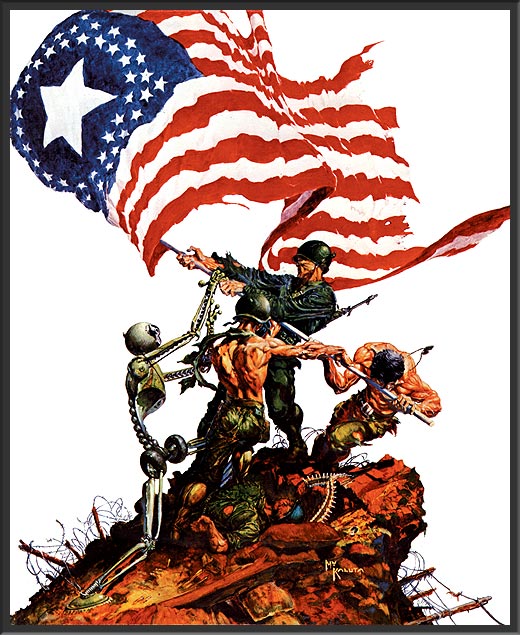














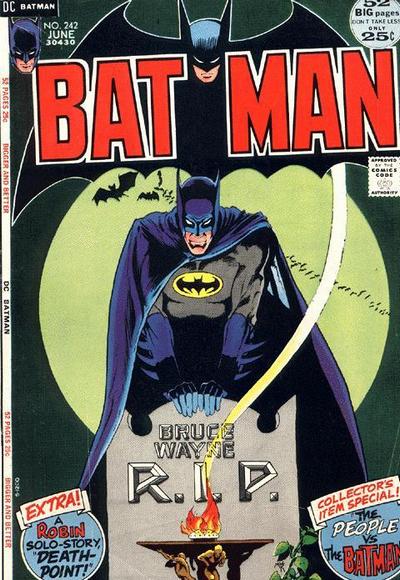










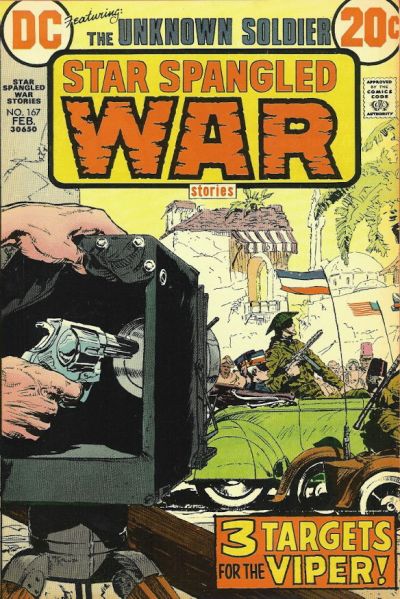






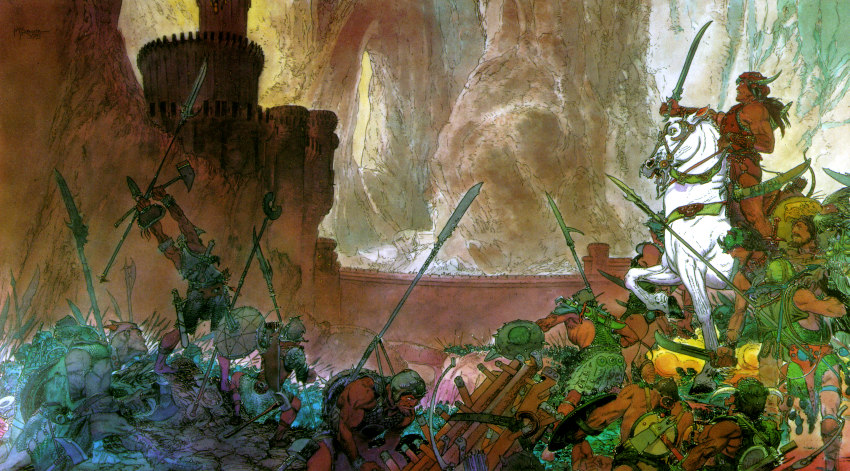
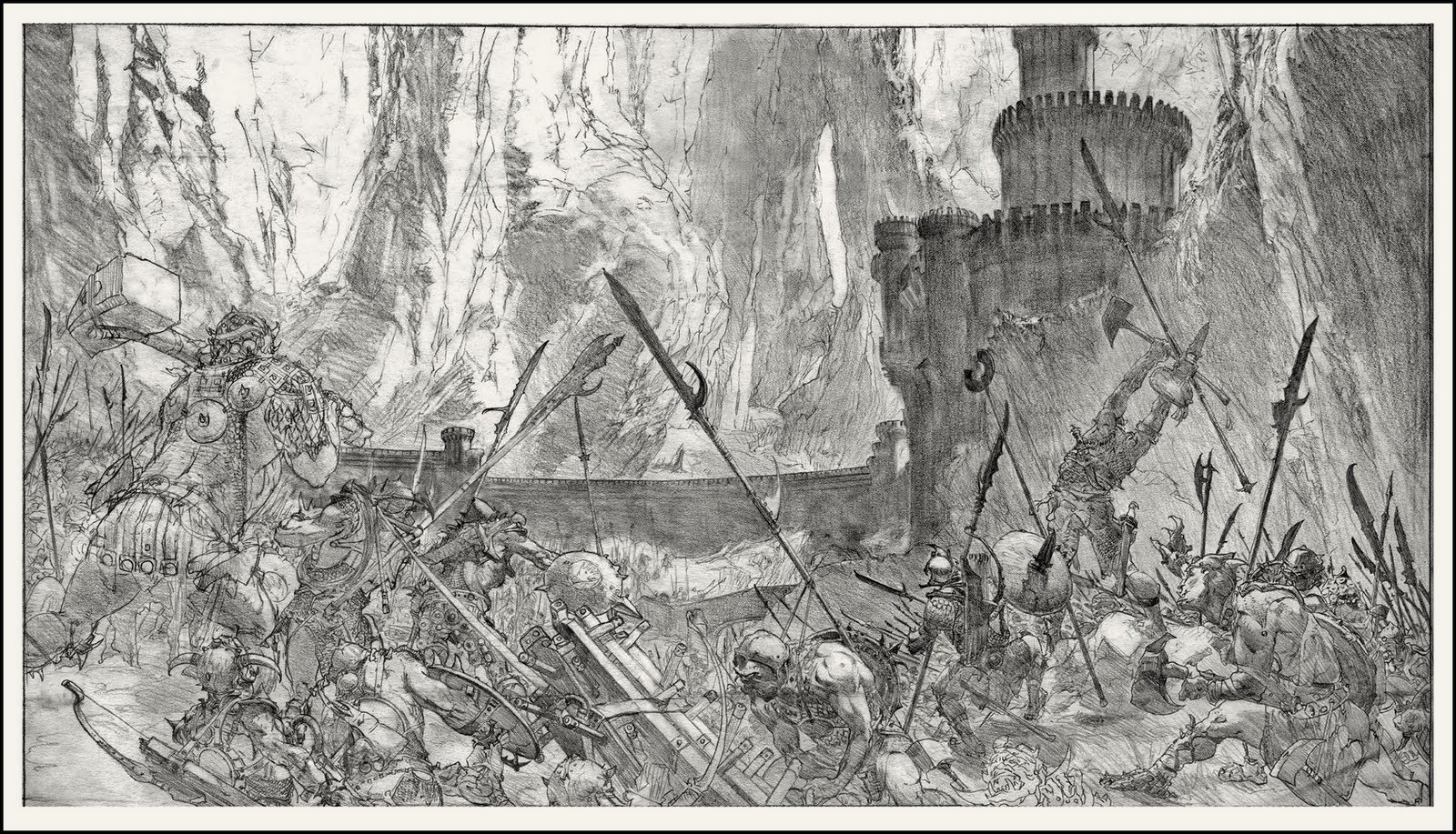












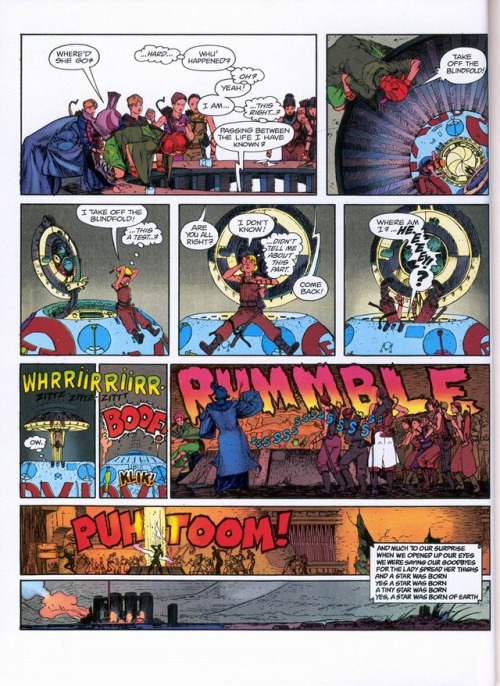




![[Linked Image from 2.bp.blogspot.com]](http://2.bp.blogspot.com/-sbk-7RvKtq0/VYensa3ZjcI/AAAAAAAA3jU/PE5laVkDPYc/s1600/00kal.jpg)
![[Linked Image from i.pinimg.com]](https://i.pinimg.com/736x/3b/6b/35/3b6b3573ffeff452a5721a8f74b247e8.jpg)
![[Linked Image from i.pinimg.com]](https://i.pinimg.com/736x/d0/e7/26/d0e726a9fc9a2c254761d40161207783--swords-mike-dantoni.jpg)
![[Linked Image from pictures.abebooks.com]](https://pictures.abebooks.com/inventory/md/md22513709799.jpg)
![[Linked Image from 64.media.tumblr.com]](https://64.media.tumblr.com/878f06e0f02626aea1ee308c9d2e08c3/tumblr_n9ecgwjS8d1rom810o2_400.jpg)
![[Linked Image from i.pinimg.com]](https://i.pinimg.com/originals/47/46/40/474640e824eb6f7d1a134abe524ea8c0.jpg)
![[Linked Image from i.pinimg.com]](https://i.pinimg.com/originals/1f/5c/7a/1f5c7ad1b5664dbd645f9bf8e658077b.jpg)
![[Linked Image from cafans.b-cdn.net]](https://cafans.b-cdn.net/images/Category_2825/subcat_88656/9ZL190Ru_1611131926001.jpg)
![[Linked Image from i.pinimg.com]](https://i.pinimg.com/736x/03/86/ff/0386ff0a9fe62a502b0d934dde0e9264--comics.jpg)
![[Linked Image from 1.bp.blogspot.com]](https://1.bp.blogspot.com/-hKwbBMn9zPA/Uny_nuKw1bI/AAAAAAAAAso/rCr7yltmrzk/s1600/MIKE+KALUTA+002+BATMAN+400.jpg)
![[Linked Image from i.pinimg.com]](https://i.pinimg.com/originals/d2/bf/a3/d2bfa30f3720d032dc8774d3b4b0f930.jpg)
![[Linked Image from i.pinimg.com]](https://i.pinimg.com/originals/fa/67/9b/fa679b16b0092b30e7420f784470e77b.jpg)
![[Linked Image from 4.bp.blogspot.com]](http://4.bp.blogspot.com/_PB-O1yT5EYg/TQLfpnrlYbI/AAAAAAABJ_k/ITRFIrQR7Kk/s1600/kaluta_1972_10_forbiddentalesdarkmansion_07.jpg)
![[Linked Image from i.pinimg.com]](https://i.pinimg.com/736x/3e/bb/7c/3ebb7c1a778099030091cc7f7b836a97.jpg)